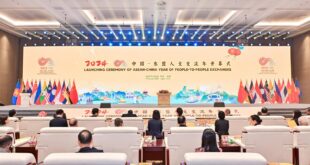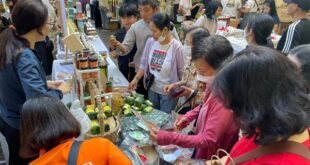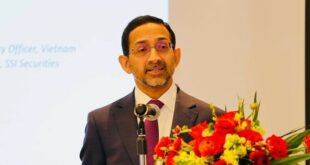Global industrial manufacturers are pursuing the tungsten supply chain from Vietnam, seeing that a Vietnamese company has gradually emerged as the leading integrated supplier of advanced high-tech global materials.
With a strict lockdown policy, a focal part of China’s “zero Covid-19” strategy, global trade witnessed a sudden and complete halt in imports and exports, disrupting the global tungsten supply chain.
Supply shortage, inventory at low level led to the high European spot price of APT (chemically extracted and separated tungsten concentrate as Ammonium Paratungstate). European prices for APT with 88.5 percent WO3 increased by nearly 39 percent from early 2021 to $320-325 per maximum transmission unit in December 2021 according to the Argus Analytics outlook report.
There has been almost no new supply in the market for years. According to World Trade Organization statistics, the U.S., Europe and Japan consume about 55 percent of tungsten but only produce about 5 percent of the total global supply.
Not until the supply chain tension and tungsten price rise did U.S. traders drastically seek ex-China supplies. The U.S. may be rich in minerals, but there are no tungsten mines at all. In 2013, EMC Metals, an American tungsten mining company, strove to open Springer mine in Nevada to ease the pressure on domestic manufacturers. However, despite efforts to seek new supplies, the U.S. administration still has to import up to 40 percent of tungsten from China each year.
China is restricting tungsten exports to the U.S. market, a notable highlight in the United States Geological Survey’s (USGS) 2019 Mineral Commodity Summaries.
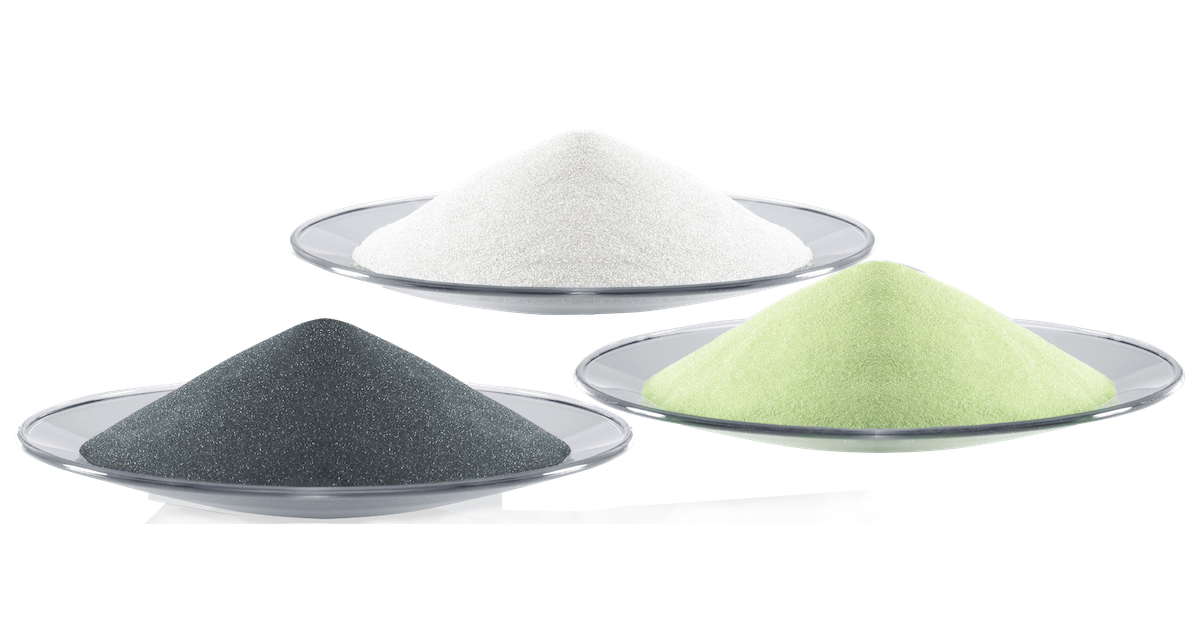 |
|
Tungsten products of Masan High-Tech Materials. Photo courtesy of Masan High-Tech Materials |
Global industry and defense cannot rely on the supply of tungsten from Russia as a large supply to cater for the shortage. Besides the conflict’s impact in Ukraine today, Russia has struggled to maintain its role as China’s “competitor” in tungsten export to the global market for years.
A study on tungsten development strategy, published in the U.S. Journal for Resources, Conservation & Recycling, asserted that 70 percent of China’s tungsten reserves comprise Scheelite, a low-grade ore, energy-intensive mining, polluted and higher operating cost. This might further undermine China’s capability to supply raw tungsten globally.
The latest forecasts all mention that the supply strain would not end soon. Global tungsten manufacturers and traders are facing two options, either participating in countries with tungsten mines to develop ore grades and process high-quality products for the world market or investing into new mines in other potential countries to compensate for the lack of supply in the long term.
New supply
The tungsten market regained its momentum growth late last year, after several years of oversupply and low prices. According to Mirae Asset Securities (MASVN), the recovery of the world economy after Covid-19 and the conflict between Russia and Ukraine have pushed tungsten price up to $350/mtu, an 11 percent increase compared to the end of 2021 and 24 percent higher than the 2021 average.
“The price of tungsten will continue to increase in the coming time,” MASVN said. The company believed that the demand for change in automotive technology from gasoline to electric vehicles and military conflict are significant drivers of the tungsten price increase, which is even projected to exceed the historic peak of $450/mtu established in 2011 when the world recovered from the 2008 economic crisis.
 |
|
An aerial view of The Nui Phao polymetallic-tungsten mine in Thai Nguyen Province, managed and operated by Masan High-Tech Materials. Photo courtesy of Masan High-Tech Materials |
The global tungsten market size continues to grow, regardless of all challenges. In 2020, the global tungsten market size was $1,775 million and is expected to reach $2,361.6 million by the end of 2027, at a CAGR of 4.2 percent in the period 2021-2027, according to the report released in January 2022 by 360 Research Reports, a mineral market research company based in Maharashtra, India.
According to data from the United States Geological Survey (USGS), Vietnam possesses the world’s third-largest tungsten reserves at 95,000 tons, coming after Russia (400,000 tons) and China (1.9 million tons). Masan High-Tech Materials’ products from Nui Phao mine have gradually gained worldwide recognition, and therefore the company is becoming a partner of choice for major business partners around the world. Nui Phao is also one of the world’s largest proven tungsten reserves (ex-China), with 52.5 million tons of WO3 ore at the average grade of 0.21 percent.
Now that production has returned to normal, many global industrial manufacturers desire to participate in the tungsten supply chain from Vietnam, seeing Masan High-Tech Material has emerged as the leading integrated supplier of advanced high-tech materials. Some U.S. manufacturers also believe that the supply from Masan High-Tech Materials could not only enable the U.S. market to ease its dependence on Chinese tungsten, but also avoid high import tariffs of 15 percent imposed on products from China since 2018.
Masan High-Tech Materials’ ex-China market share is growing year by year, greater than 40 percent recorded in 2017, making it a major supplier of key industrial minerals, including tungsten, fluorspar and bismuth.
Currently, Masan High-Tech Materials focuses on going downstream for all four product lines of Tungsten, Fluorspar, Bismuth and Copper, to improve the value of minerals. In 2020, Masan High-Tech Materials completed the acquisition of H.C. Starck Tungsten Powders and established a strategic alliance with Mitsubishi Materials Corporation, a Japanese firm, through an investment of $90 million, equivalent to 10 percent of Masan High-Tech Materials shares.
“We are researching and developing advanced mineral materials and sourcing stable and long-term raw materials for recycling,” said Craig Bradshaw, general director of Masan High-Tech Materials.
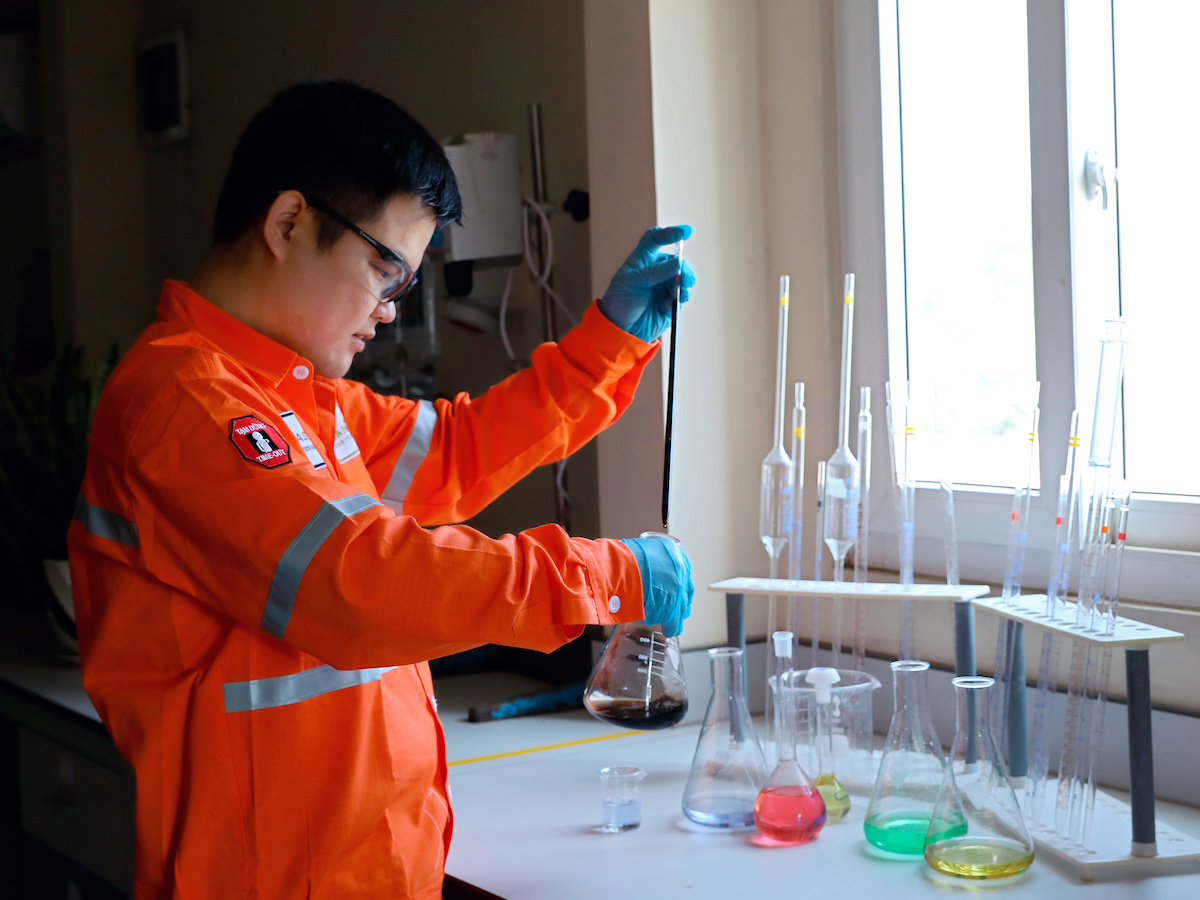 |
|
Masan High-Tech Materials are researching and developing advanced mineral materials and long-term raw materials for recycling. Photo courtesy of Masan High-Tech Materials |
Up to now, Masan High-Tech Materials has had a big customer portfolio in the America and European markets, including ATI Tungsten Materials (later acquired by Kennametal) and has received positive feedback on product lines. “Our market position is particularly based on a strong ability to innovate, substantial investment in technology and highly skilled experts,” said Bradshaw.
The world needs a steady supply of advanced materials and minerals to meet major global trends in renewable energy, electric vehicles, recycling, urbanization and sustainable development. Masan High-Tech Materials is not only ready to participate but also well-placed to lead technological developments in these areas. Masan High-Tech Materials has wisely avoided “direct competition” with Chinese producers. Instead, it creates a potential market to become a sustainable manufacturer, ensuring long-term supply for its partners.
- Reduce Hair Loss with PURA D’OR Gold Label Shampoo
- Castor Oil Has Made a “Huge” Difference With Hair and Brow Growth
- Excessive hair loss in men: Signs of illness that cannot be subjective
- Dịch Vụ SEO Website ở Los Angeles, CA: đưa trang web doanh nghiệp bạn lên top Google
- Nails Salon Sierra Madre
 VnExpress News The News Gateway of Vietnam
VnExpress News The News Gateway of Vietnam

